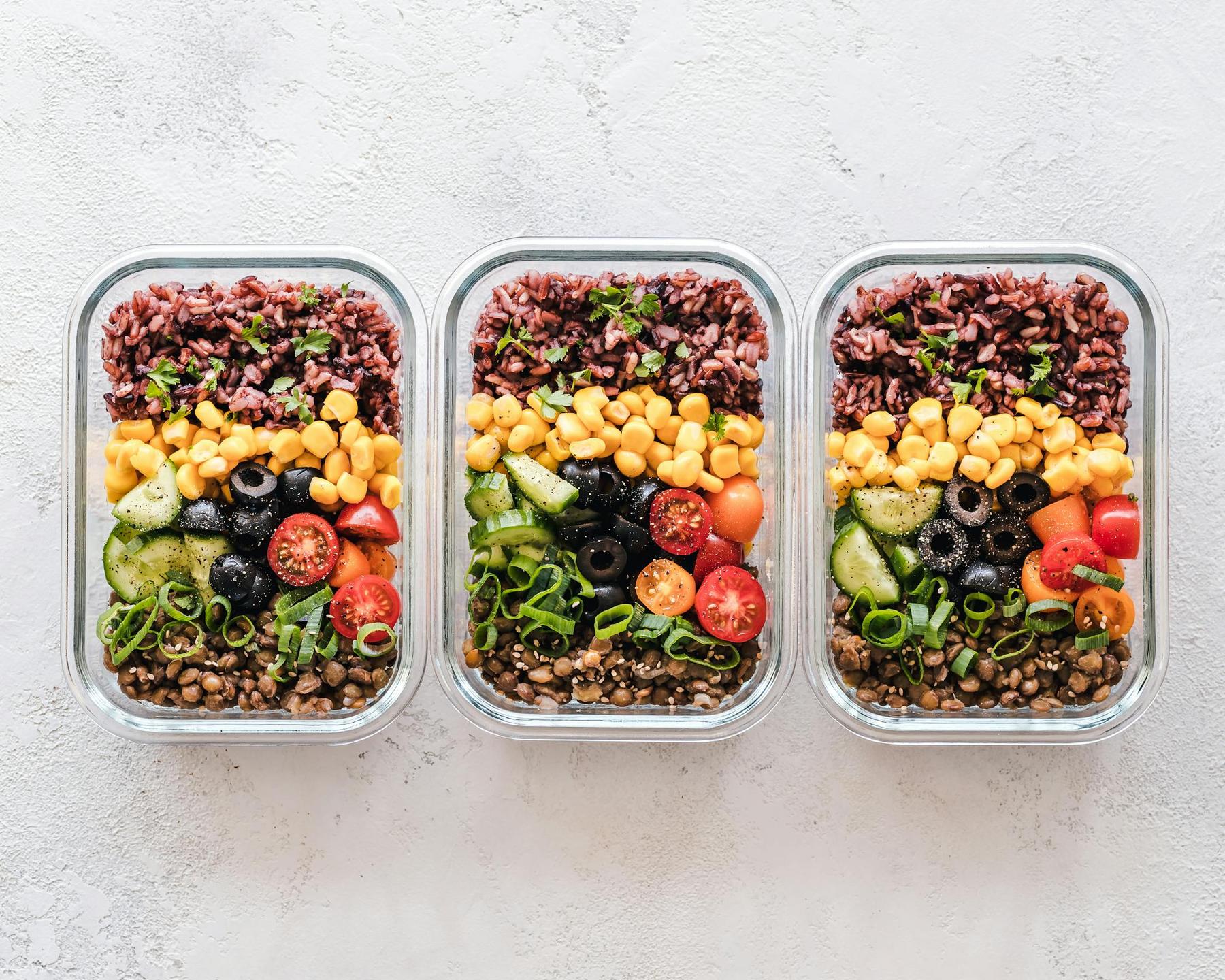Navigating dietary changes for digestive health whilst simultaneously pursuing weight management goals presents a unique challenge. The low-FODMAP diet—originally developed to alleviate symptoms of irritable bowel syndrome (IBS)—has gained attention for its potential secondary effects on body weight. While not designed as a weight loss strategy, research indicates approximately 30% of individuals following this protocol experience unintended weight fluctuations. For Australians struggling with both digestive symptoms and weight concerns, understanding the complex interplay between FODMAP restriction and weight management is essential for achieving sustainable health outcomes.
What Is a Low-FODMAP Diet and How Does It Affect Your Body?
The low-FODMAP diet represents a therapeutic eating pattern that limits fermentable oligosaccharides, disaccharides, monosaccharides, and polyols—short-chain carbohydrates poorly absorbed in the small intestine. These compounds create digestive distress through osmotic activity and rapid fermentation in the colon, triggering abdominal distension, pain, and altered bowel habits in susceptible individuals.
The protocol follows a structured three-phase approach:
- Elimination phase (2-6 weeks): Temporarily removes high-FODMAP foods to reduce symptoms
- Reintroduction phase (6-8 weeks): Systematically tests tolerance to specific FODMAP subgroups
- Personalisation phase: Creates a long-term sustainable diet based on individual tolerance thresholds
Clinical evidence demonstrates that 50-86% of IBS patients achieve significant symptom relief during the initial elimination phase. This efficacy stems from reduced luminal water retention and decreased gas production, which collectively minimise mechanical stress on the gut wall.
Key insight: The low-FODMAP diet is fundamentally a diagnostic tool for identifying individual food triggers rather than a permanent restrictive eating pattern.
Can a Low-FODMAP Diet Actually Help with Weight Loss?
Though weight management is not an intended outcome of the low-FODMAP protocol, approximately 22% of adherents report unintended reductions in body mass during the elimination phase. Several interconnected mechanisms contribute to this phenomenon:
Caloric Deficit Mechanisms
- Macronutrient Shifts: Excluding wheat-based products, certain legumes, and high-lactose dairy often leads to spontaneous reductions in carbohydrate and fat intake. Many individuals inadvertently adopt a higher-protein dietary pattern, enhancing satiety signals and reducing overall energy consumption.
- Portion Control Awareness: Strict adherence to low-FODMAP serving sizes introduces natural caloric deficits. When following recommended portions (e.g., ½ cup cooked quinoa versus unrestricted amounts), overall energy intake typically decreases.
- Reduced Hedonic Eating: The diet’s complexity discourages impulsive snacking and processed food consumption, particularly in social settings where high-FODMAP options predominate.
Important consideration: These weight changes appear transient in many cases, normalising during the reintroduction phase when the diet becomes less restrictive and more individualised.
What Challenges Might You Face When Following a Low-FODMAP Diet for Weight Loss?
Successfully managing weight whilst adhering to FODMAP restrictions requires navigating several key challenges:
Nutrient Density Concerns
Long-term adherence to unmodified low-FODMAP protocols carries risks of micronutrient deficiencies that can undermine both digestive health and weight management efforts:
| Nutrient at Risk | Reason for Concern | Recommended Low-FODMAP Alternatives |
|---|---|---|
| Calcium | Exclusion of lactose-containing dairy | Lactose-free milk, fortified almond milk, canned salmon with bones |
| Dietary Fibre | 40% average decrease during elimination phase | Oats, kiwi fruit, oranges, unripe bananas, chia seeds |
| B Vitamins | Refined grain substitution for wheat products | Eggs, lean meats, enriched rice products |
| Prebiotic compounds | Restriction of several prebiotic-rich foods | Careful inclusion of tolerated amounts of oats and green bananas |
Psychological and Behavioural Factors
The cognitive load of meal planning can exacerbate disordered eating patterns in vulnerable populations. Research indicates that 18% of participants develop orthorexic tendencies during strict elimination, characterised by obsessive label-checking and anxiety around food choices. These behaviours frequently persist into the maintenance phase, complicating weight stabilisation efforts.
Expert insight: “The restrictive nature of the elimination phase, while therapeutically necessary, creates a psychological environment that can inadvertently promote unhealthy relationships with food for some individuals,” notes research from the gut health field.
How Can You Optimise a Low-FODMAP Diet for Effective Weight Management?
Aligning FODMAP restriction with weight management goals requires strategic planning and professional guidance. Evidence-based approaches differ depending on whether you’re trying to prevent unintentional weight loss or pursue intentional weight reduction:
Preventing Unintentional Weight Loss
For individuals who need to maintain weight while managing IBS symptoms, evidence-based strategies include:
- Energy-Dense Food Fortification: Incorporating calorically dense low-FODMAP foods like macadamia nuts (30g serving), olive oil, and lactose-free cheese prevents deficits without exacerbating symptoms. Research demonstrates that adding 1-2 tablespoons of olive oil to meals increases daily energy intake by 250-300 kcal.
- Frequent Meal Timing: Consuming five to six small meals daily helps overcome early satiety common in IBS patients. Intervention trials show this approach maintains BMI within ±2% in 89% of participants during the elimination phase.
- Protein Prioritisation: Animal proteins (eggs, poultry, fish) and tofu provide satiety-promoting amino acids without FODMAP content. Clinical guidelines recommend 25-30g protein per meal to preserve lean mass during the restrictive phases.
Intentional Weight Loss Considerations
For overweight individuals with IBS who wish to lose weight safely:
- Post-Reintroduction Caloric Targeting: Once trigger foods are identified, gradual calorie reduction (250-500 kcal/day) prevents symptom recurrence. Research has demonstrated 5-7% body weight loss over 12 weeks using this method in patients with BMI >27.
- Low-FODMAP Volume Eating: Non-starchy vegetables (spinach, bell peppers) and high-water-content fruits (oranges, grapes) provide bulk with minimal FODMAPs. Pairing these with lean proteins creates meals averaging 400-500 kcal with high satiety indexes.
- Exercise Synergy: Resistance training three times weekly counteracts potential muscle loss during calorie restriction. Recent randomised controlled trials found that combining low-FODMAP nutrition with strength exercises preserved fat-free mass better than diet alone.
Practical insight: The most successful approach typically involves completing the full three-phase protocol before intentionally modifying caloric intake, as attempting weight loss during the diagnostic phases may compromise symptom assessment.
When Should You Seek Professional Support for Low-FODMAP Weight Management?
Managing both digestive symptoms and weight goals simultaneously requires specialised expertise. Meta-analyses confirm that dietitian-guided low-FODMAP protocols yield superior weight and symptom outcomes compared to self-directed approaches.
Professional support becomes particularly crucial in the following scenarios:
- Complex medical history: Individuals with multiple digestive conditions, food allergies, or metabolic disorders require tailored approaches.
- Significant weight fluctuations: Weight changes exceeding 5% of body mass during the elimination phase warrant professional assessment.
- Nutritional risk factors: Pre-existing nutrient deficiencies or increased nutritional needs (pregnancy, athletic training) necessitate expert guidance.
- Psychological concerns: History of disordered eating or developing anxiety around food choices during restriction.
Integrated care models combining FODMAP-trained dietitians with medical oversight have demonstrated the most promising outcomes, particularly for complex cases requiring both symptom management and weight optimisation.
Expert recommendation: “The complexity of balancing FODMAP restrictions with weight management goals makes professional support not merely beneficial but essential for most individuals,” according to clinical practice guidelines.
Balancing Gut Health and Weight Management: A Sustainable Approach
The low-FODMAP diet represents a powerful tool for IBS management when applied judiciously. While unintended weight changes pose significant clinical challenges, structured protocols incorporating energy density modifications, protein optimisation, and professional monitoring enable concurrent weight management.
For Australians navigating both digestive symptoms and weight concerns, the key principles for success include:
- Complete the full diagnostic protocol before attempting intentional weight modification
- Prioritise nutrient density within FODMAP constraints
- Monitor both symptom response and body composition changes
- Develop a personalised sustainable approach rather than permanent restriction
- Seek integrated medical and nutritional support for complex cases
The emerging evidence suggests that with proper implementation, it is possible to achieve both digestive comfort and weight management goals without compromising nutritional adequacy or long-term health outcomes.
Can I lose weight effectively while following a low-FODMAP diet?
Yes, weight loss is possible on a low-FODMAP diet, though it’s not the primary purpose of this eating pattern. Approximately 22% of individuals experience unintentional weight loss during the elimination phase due to reduced caloric intake, increased protein consumption, and decreased impulsive eating. For intentional weight management, it’s recommended to complete the full three-phase protocol before implementing calorie restrictions, ideally under professional guidance to ensure nutritional adequacy.
How do I prevent nutrient deficiencies on a low-FODMAP weight loss plan?
Preventing nutrient deficiencies requires strategic food selection and portion control. Focus on calcium-rich alternatives like lactose-free dairy, incorporate low-FODMAP fibre sources such as oats and chia seeds, and ensure adequate protein intake through eggs, fish, and lean meats. Regular monitoring of micronutrient status with healthcare professionals is recommended, particularly for long-term adherence or when combining FODMAP restriction with caloric deficit.
When should I transition from the elimination phase to reintroduction for optimal weight management?
The elimination phase should typically last 2-6 weeks, regardless of weight management goals. Extending this highly restrictive phase to promote weight loss is not recommended as it increases risks of nutritional deficiencies and disordered eating patterns. Research shows the most successful approach involves completing the full diagnostic protocol first, then implementing modest caloric adjustments during the personalisation phase once individual triggers are identified.
How does exercise complement a low-FODMAP weight management plan?
Exercise, particularly resistance training three times weekly, plays a crucial role in preserving lean muscle mass during weight loss efforts on a low-FODMAP diet. Clinical trials demonstrate that combining appropriate physical activity with individualised FODMAP plans results in better body composition outcomes than dietary changes alone. Timing exercise sessions around low-symptom periods and ensuring adequate protein intake (25-30g) post-workout optimises results while minimising digestive distress.
Can medical weight management treatments be combined with a low-FODMAP approach?
For individuals with both IBS symptoms and significant weight management needs (BMI ≥27), integrating medical weight management with FODMAP protocols under healthcare supervision shows promising results. This combined approach addresses both digestive symptoms and metabolic health simultaneously, though it requires careful professional monitoring to ensure symptom control and nutritional adequacy.



